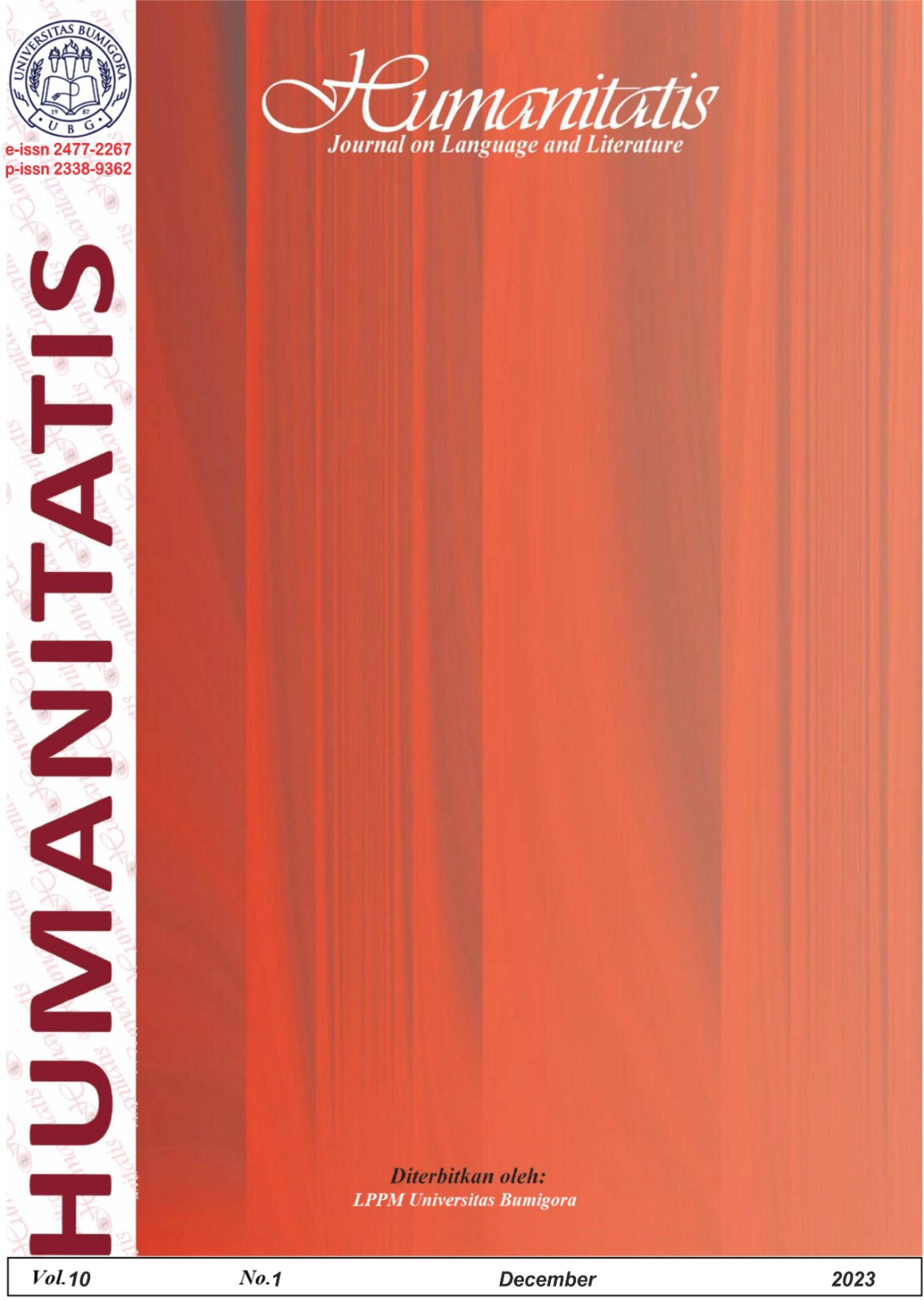The Use of Flouting Maxim in “Rise of the Guardians†Movie
DOI:
https://doi.org/10.30812/humanitatis.v10i1.2558Keywords:
Flouting Maxims, Maxims, Pragmatics, Types of Flouting MaximsAbstract
This descriptive qualitative research analyzed flouting maxims found in Rise of the Guardians movie. The researchers used utterances that contained flouting maxims as the data and the theory of Grice (1975) was used. Maxims refer to linguistic principles that must be understood in communication between speaker and listener in order for the communication process to proceed well. Flouting maxims refer to the phenomena that happen when communicator do not obey the cooperative principal communication. The phenomena of flouting maxims come up in daily utterance and the existence even appears in movie as media that all utterances are scripted. The aim of this research is to analyze flouting maxims in utterances of Rise of the Guardians movie. In process of collecting data, the researchers used the non-participatory observational method. In this research, pragmatic identity method and the competence in equalizing technique used to analyze the data. Based on the results, the researchers found 10 utterances of flouting maxims from the beginning until end of the movie. Flouting maxim of relation had four utterances, three utterances were found in flouting maxim of manner, one utterance was in flouting maxim of quality, and flouting maxim of quantity appeared two utterances.
References
Devi, R. S., & Ambalegin, A. (2022). Flouting Maxim Types Found in “ Thor Ragnarok †Movie. Humanitatis : Journal of Language and Literature, 8(2), 249–260. https://doi.org/https://doi.org/10.30812/humanitatis.v8i2.1648
Grice, P. H. (1975). Logic and conversation. Academic Press.
Hamani, T., & Puluhulawa, Y. (2019). Pragmatics analysis of maxim flouting done by the main characters in Kungfu Panda movie by Jonathan Aibel & Glenn Berger. British (Jurnal Bahasa Dan Sastra Inggris), 8(1), 16. https://doi.org/http://dx.doi.org/10.31314/british.8.1.16-26.2019
Hamidah, N., Arifin, M. B., & Ariani, S. (2022). Analysis of Flouting of Conversational Maxims By Characters in the Help Movie. Ilmu Budaya: Jurnal Bahasa, Sastra, Seni, Dan Budaya, 6(1), 80–93. https://e-journals.unmul.ac.id/index.php/JBSSB/article/view/5100
Hidayati, N. N. (2018). Pelanggaran Maksim (Flouting MAxim) Dalam Tuturan Tokoh Film Radio Galau FM:Sebuah Kajian Pragmatik. 2(2), 248–263. https://doi.org/https://doi.org/10.36840/an-nas.v2i2.108
Ibrahim, Z., Arifin, M. B., & Setyowati, R. (2018). The Flouting of Maxim in the Se7En Movie Script. Jurnal Ilmu Budaya, 2(1), 81–94. https://e-journals.unmul.ac.id/index.php/JBSSB/article/view/1016
Latifatun Nuzulia, I. F. (2020). Pragmatic Analysis of Flouting Maxim in Donald Trump’s Interview with TIME in the Oval Office 2020. Journal of English Language Teaching and Linguistics, 5(3), 333. https://doi.org/http://dx.doi.org/10.21462/jeltl.v5i3.443
Manurung, L. W. (2019). Flouting Maxims in Hitam Putih Talk Show. Suar Betang, 14(2). https://doi.org/10.26499/surbet.v14i2.126
Marlisa, R., & Hidayat, D. N. (2020). The analysis of flouting maxim in Good Morning America (GMA) talkshow. Journal of Language, Education, and Humanities, 7(2). https://doi.org/http://dx.doi.org/10.22373/ej.v7i2.6630
Sudaryanto. (2015). Metode dan aneka teknik analisis bahasa. Sanata Dharma University Press.
Wahyudi, A., Yusuf, S., & Lestari, Z. W. (2020). Maxim’s Flouting: An Analysis of Classroom Interaction. Journal of English Education and Teaching, 4(2), 219–231. https://doi.org/10.33369/jeet.4.2.219-231
















